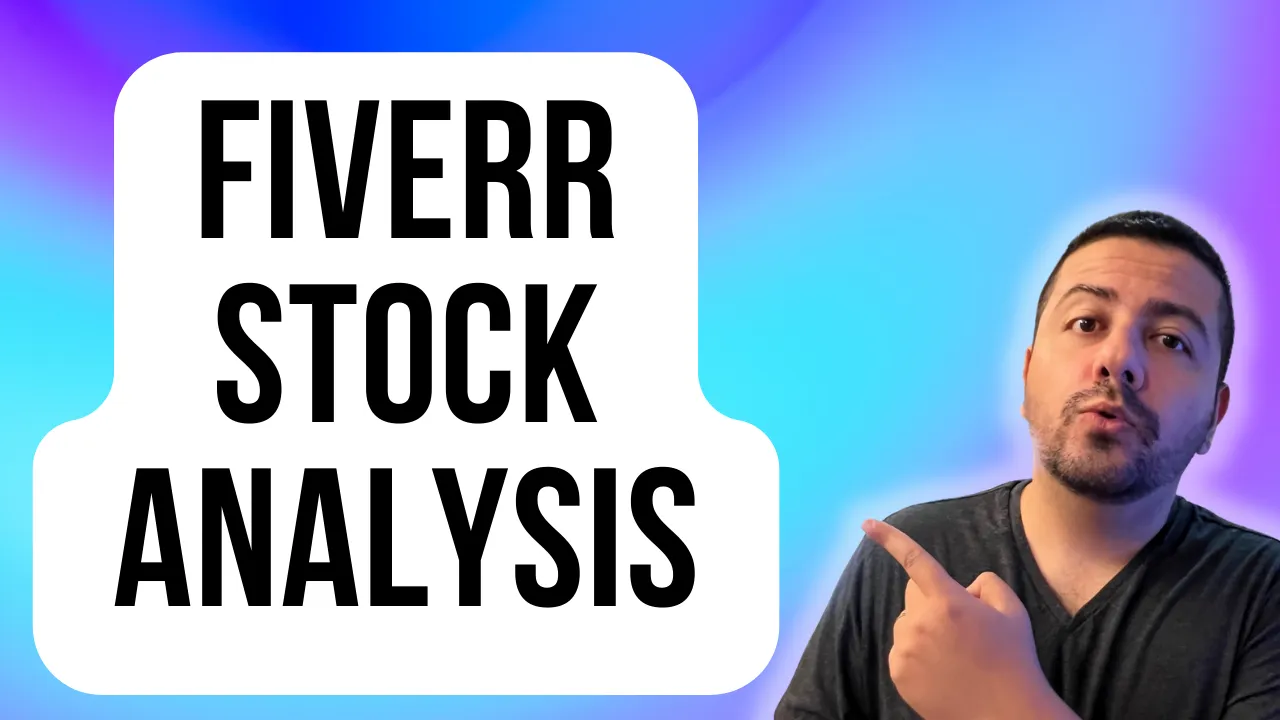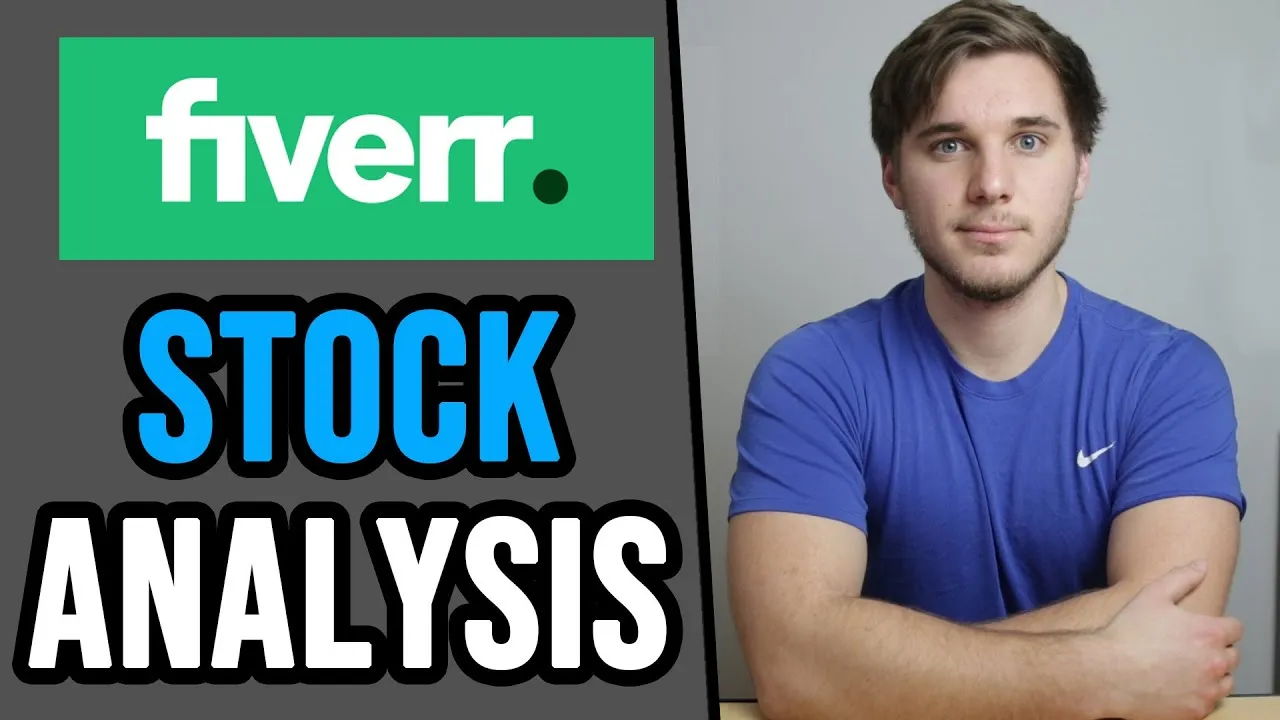Are you considering diving into the world of Fiverr stock? Well, you're not alone! Many investors are evaluating this intriguing platform that has significantly changed the freelancing landscape. In this blog post, we'll investigate whether selling Fiverr stock is a wise move, scratching beneath the surface to analyze its performance, trends, and market prospects. Ready to uncover the insights that will guide your decision? Let’s get started!
Understanding Fiverr's Business Model

Fiverr operates on a unique and innovative business model that scales the freelancing economy to new heights. At its core, Fiverr connects freelancers (sellers) with clients (buyers) through a vibrant online marketplace. Let’s break down its key components:
- Service Diversity: Fiverr offers a vast array of services ranging from graphic design, writing, and translation to digital marketing and programming. This diverse range attracts a broad audience, making it a one-stop-shop for freelance services.
- Gig Economy: The platform thrives on a 'gig' structure where freelancers advertise specific services or 'gigs.' Buyers can easily browse, hire, and pay based on predefined prices. This model promotes transparency and simplicity.
- Two-Sided Marketplace: Fiverr operates a two-sided marketplace. On one side are the sellers offering their skills and services, and on the other are buyers looking for those services. Fiverr acts as an intermediary, taking a commission from each transaction.
- Global Reach: With access to freelancers around the world, Fiverr supports both buyers and sellers, fostering a myriad of collaborations that transcend geographical boundaries.
- Subscription and Membership Options: Fiverr has introduced subscription plans for businesses, offering access to bundled services over a period. This not only stabilizes revenue but also cultivates long-term client relationships.
Recognizing these elements gives investors a clear view of Fiverr's operational strategy. As you assess your investment potential, understanding its foundational business model will be pivotal to making informed decisions about Fiverr stock.
Also Read This: How to Run Ads on Fiverr
Current Market Trends and Fiverr's Performance

When considering whether to sell Fiverr stock, it's crucial to examine the current market trends and how Fiverr has been performing lately. The gig economy has seen a significant shift, especially post-pandemic, as more businesses and individuals embrace freelance services. Fiverr, a major player in this space, has largely benefited from this change.
Let’s take a closer look at some of the key market trends affecting Fiverr:
- Increased Demand for Freelance Services: More companies are looking to reduce overhead costs and are turning towards freelancers for specific projects, which may drive increased demand for Fiverr’s offerings.
- Technological Advancements: The rise in technological tools for collaboration and communication has made it easier for freelancers and clients to connect seamlessly.
- Shifts in Consumer Behavior: Individuals are increasingly valuing flexibility and creative solutions, opening up new avenues for Fiverr’s platform.
- Global Expansion: Fiverr has been making moves to expand globally, thereby tapping into international markets which can bolster its revenue.
In terms of performance, Fiverr’s stock has been somewhat volatile. After initial surges during the pandemic, there's been a correction as investors reassess growth potential. Here’s a brief recap:
| Time Period | Stock Price Change | Market Sentiment ||----------------------|--------------------|-------------------------------|| Pandemic Surge | +200% | Optimism in gig economy growth || Recent Stabilization | -30% | Caution due to competition |
This volatility is not uncommon in tech stocks, especially in a transforming sector like freelancing. If you’re considering selling Fiverr Stock, understanding these trends and market sentiments can be your guiding light.
Also Read This: How to View Someone’s LinkedIn Account on Fiverr
Financial Analysis of Fiverr Stock

Now let’s dive into the financial analysis of Fiverr stock. Understanding a company's financial health is essential when making investment decisions, especially for companies in the gig economy like Fiverr.
Here are some key financial metrics to consider:
- Revenue Growth: Fiverr has shown impressive revenue growth year over year, but it’s crucial to scrutinize whether this trend can continue.
- Profit Margins: While Fiverr was initially operating at a loss, recent quarters have shown signs of narrowing loss margins, which is a positive indicator.
- Cash Flow: Positive cash flow is vital for any company. Investors should look at Fiverr’s cash flow statements to assess liquidity trends.
- Market Valuation: A high P/E ratio can suggest overvaluation, given that Fiverr operates in a competitive space with fluctuating demand.
Here’s a simplified view of Fiverr’s financials:
| Metric | Value ||------------------------|---------------------|| Revenue (Last Quarter) | $100 million || Net Income | -$7 million || P/E Ratio | N/A (negative earnings) || Cash Flow | Positive |
Overall, while Fiverr shows potential for future growth, the current financial indicators suggest a cautious approach. It’s essential to balance optimism about future performance with the realities of financial data before deciding if now is the right time to sell.
Also Read This: How to Become a Seller on Fiverr: A Comprehensive Guide
5. Factors Influencing Fiverr's Stock Value
When considering whether to sell Fiverr stock, it's crucial to understand the myriad of factors that can influence its value. Here's a breakdown of the key elements:
- Market Trends: The overall market performance and investor sentiment can have a significant impact. If the tech sector is booming, Fiverr may benefit. Conversely, a downturn could drag its stock down.
- Company Performance: Fiverr's quarterly earnings reports are pivotal. Growth in revenue, user acquisition, and profitability are indicators that investors watch closely. Any notable fluctuations in these metrics can affect stock valuation.
- Competition: Fiverr operates in a competitive landscape filled with other freelance platforms. The performance of competitors, such as Upwork and Freelancer, can influence Fiverr's stock, particularly if they roll out new features or aggressive marketing campaigns.
- User Satisfaction: The satisfaction of Fiverr's users can directly impact its reputation and, in turn, performance. Strong user feedback often attracts new customers, whereas negative reviews can hamper growth.
- Macroeconomic Factors: Economic conditions such as unemployment rates, consumer spending, and global economic shifts can also affect Fiverr's performance. During economic uncertainty, freelance work may increase, positively influencing Fiverr's stock.
Keeping an eye on these factors will provide you with a clearer picture of Fiverr's stock trajectory and can guide your decision-making process on whether to sell.
Also Read This: Is Fiverr a US Company?
6. Pros and Cons of Selling Fiverr Stock
Deciding to sell Fiverr stock isn’t a black-and-white decision—it can have its advantages and disadvantages. Let’s explore them:
| Pros | Cons |
|---|---|
| Realizing Gains: If the stock has increased in value since your purchase, selling can secure your profits. | Missed Opportunities: By selling, you might miss out on future growth if the stock continues to appreciate. |
| Reallocation: Selling allows you to reinvest the money into potentially stronger or more stable investments. | Market Volatility: Markets can fluctuate wildly, and selling in a downturn may not reflect the company’s true value. |
| Simplifying Your Portfolio: If Fiverr stock is taking too much mental space, selling can simplify your investments. | Tax Implications: Depending on your location, selling stock may incur capital gains taxes, reducing your profit. |
By weighing these pros and cons, you’ll have a clearer view of whether selling Fiverr stock aligns with your investment strategy and financial goals.
Also Read This: How to Post an Ad on Fiverr: A Step-by-Step Guide
Expert Opinions and Predictions
When it comes to investing, expert opinions can provide valuable insights, especially in assessing stocks like Fiverr. Analysts and financial advisors offer diverse perspectives that can help guide your decision-making process.
Many financial analysts believe that Fiverr's growth potential is significant. Here are some key points they often emphasize:
- Market Position: Fiverr operates in a niche market that's expanding as more businesses seek freelance talent online. This upside potential is frequently noted as a strong argument for holding the stock.
- Financial Health: Experts look closely at Fiverr's revenue streams and profitability. Analysts often highlight the company's rising revenue and decreasing expenses as favorable signs.
- Competitive Landscape: With competitors like Upwork and Freelancer, some experts advise carefully weighing Fiverr’s unique selling proposition. Many believe Fiverr's focused service model will help differentiate it within a crowded marketplace.
However, it’s also important to note some cautious sentiments:
- Valuation Concerns: Some analysts argue that Fiverr's stock may be overvalued based on traditional metrics. They suggest that potential investors should wait for a market correction.
- Market Volatility: With rising economic uncertainties, including inflation and potential recession fears, experts warn that market fluctuations may impact Fiverr’s stock performance in the short term.
Listening to expert opinions can enrich your understanding of Fiverr’s stock dynamics. Ultimately, it's beneficial to consider these insights alongside your financial goals and risk tolerance.
Conclusion: Making an Informed Decision
Deciding whether to sell Fiverr stock isn't about jumping on trends; it’s about understanding your own financial situation and the market forces at play. To make a well-informed decision, consider the following:
- Your Investment Goals: Are you looking for long-term growth, short-term profits, or a balanced approach? Understanding your objectives will help shape your decision.
- Market Trends: Keep an eye on market conditions and how they may impact Fiverr. Economic indicators, tech sector performance, and industry competition are significant factors to monitor.
- Financial Performance: Review Fiverr’s quarterly earnings reports and news releases. Check for trends in revenue, profit margins, and user growth that could inform your decision.
- Diversity of Opinion: Engaging with various expert opinions can enhance your viewpoint. Still, weigh this against your unique perspective and financial insights.
In the end, whether you choose to sell Fiverr stock or hold onto it, ensuring your decision is based on thorough research and aligns with your investment strategy is crucial. Don't rush; take your time to evaluate all available information. Sometimes, patience can lead to the most rewarding outcomes in the investment world.



